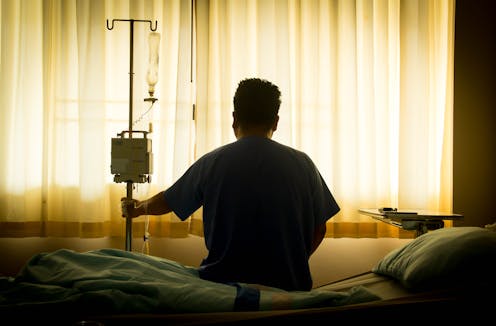How a culturally informed model of care helped First Nations patients with heart disease
- Written by The Conversation

A First Nations child born in Australia today can expect to live eight to nine years less than a non-Indigenous child born on the same day.
During their life, they are more likely to have a heart attack, and would be on average 20 years younger than the non-Indigenous patient in the hospital bed next to them when they do. Acute rheumatic fever, a disease virtually non-existent among non-Indigenous Australians, may damage their heart valves. They are more likely to develop and die from cancer, diabetes, kidney failure and lung disease.
A First Nations Australian is also more likely to have a low household income, live in overcrowded housing, and is 14 times more likely to be imprisoned. We know socioeconomic inequalities like these create health inequalities. There’s also evidence that cultural factors and experiences of racism compound the problem.
Closing the health gap between First Nations peoples and non-Indigenous Australians is a national priority. One of the ways to reduce health disparities is by improving the care Aboriginal and Torres Strait Islander people receive when they’re admitted to hospital.
Staff at the Princess Alexandra Hospital in Brisbane could see first-hand that our health system wasn’t delivering the care First Nations patients needed. So they sought to develop a culturally informed model of care for First Nations patients with heart disease.
We have all worked with this model and were part of a study to trial it. Our results, published recently in The Lancet Global Health, indicate this culturally informed model of care eliminated the gap between First Nations patients and non-Indigenous patients when we looked at heart health outcomes after they left hospital.
Designing a culturally informed model of care
The model was developed for First Nations patients with acute coronary syndrome. This includes heart attacks and angina, which is chest pain due to disease in the arteries supplying blood to the heart.
The project was co-designed with First Nations stakeholders. Training was tailored and delivered to build cultural capability across the cardiology department and to increase staff knowledge of relevant services available to First Nations patients outside the hospital.
Staff formed formal partnerships with local Aboriginal and Torres Strait Islander community-controlled health organisations. They improved the hospital environment with First Nations artwork and uniforms (displaying First Nations flags and artwork).
They brought together a “Better Cardiac Care” team including an Aboriginal and Torres Strait Islander hospital liaison officer, a cardiac nurse and a pharmacist. This team visited First Nations patients at their bedside, providing additional support, advocacy, education and care co-ordination.
Patients could confidently ask questions and yarn about their diagnosis and treatment in their own words without feelings of shame or embarrassment.
The team was focused on the patient’s needs. For example, they could co-ordinate accommodation for a patient’s relative who was travelling to the hospital from far away. They could tell a patient’s doctor if the patient needed more time to talk or make a decision, or a better explanation. Before the patient left hospital, the team could co-ordinate with the patient’s local chemist to supply their medications and book a follow-up appointment with their GP.
How we tested the model
We investigated the impact of the model of care by looking at outcomes for First Nations and non-Indigenous patients admitted with heart attacks and angina before and after the model was implemented.
Specifically, we collected data on 199 First Nations patients and 440 randomly selected non-Indigenous patients treated in the 24 months before the project began and compared them with 119 First Nations patients and 467 non-Indigenous patients treated in the 12 months after.
We particularly wanted to know if patients died, had another heart attack, needed an unexpected stent or coronary artery bypass surgery, or had to urgently come back into hospital within 90 days of being discharged.
Before the model was introduced, 34% of First Nations patients had one of those negative outcomes, much higher than the rate of 18% in non-Indigenous patients. Afterwards, these events occurred in 20% of both First Nations and non-Indigenous patients. This was a significant improvement for First Nations patients and eliminated the gap between groups.
The most significant improvement was seen in urgent re-admissions, but there were also fewer heart attacks.
Fewer heart attacks and hospital admissions are good, but we also needed to ensure patients felt culturally safe, and that their social and emotional needs were being met.
A related project asked patients and their families about their experience with the model of care. The researchers identified that relationality or connectedness between patients and the team, particularly Aboriginal and Torres Strait Islander staff, may be key to its success.
A promising concept
Our study was not a randomised trial and the control group was historical. So it’s possible factors other than the model of care might have affected the outcomes. The study was also conducted only in a single hospital.
However, we demonstrated that a culturally informed model of care, developed with and for First Nations peoples, can improve clinical outcomes. Better Cardiac Care programs based on this concept have now spread to other Queensland hospitals.
We hope similar results can be replicated in many hospitals and in other medical specialities, because improving hospital outcomes is one of many important steps needed to close the health gap for First Nations peoples in Australia.







